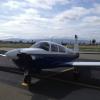Leaderboard
Popular Content
Showing content with the highest reputation on 12/28/2020 in all areas
-
Since @VinceCB took 2711W away we’ve been searching high and low for a new airplane. Flirted with Rockets, considered C180s, got disappointed by the state of most PA-30s and came very close to joining the cult (Bonanza ownership), right under my nose appeared my new ride. ’83 model 231 with a 262 conversion and TKS. Low times, by high time sitting. Waking it from its slumber and so far so good. Small fuel seeps, could use a few new hoses. Fingers crossed about the health of the bottom end. Seems to fly straight. Not sure about performance yet. Expect lots of questions about engine management. Still stuck below 10,000 until I get ADS-B installed.6 points
-
This is a fascinating thread! Hearing the rumors and listening to what people think is simply way freakin' cool ... and sometimes scary. As it turns out, I have done a few of these gross weight increases while working for an OEM, and I am in the process of doing another one right now for Blue on Top LLC. As has been mentioned above by different posters, there are several areas that need to be addressed: structures (wing positive & negative bending, landing, etc.), performance (takeoff, landing, stall speeds, etc.) and others. It might very well be "just paperwork"; it might not. From a Flight Test standpoint, 10% is typically the maximum amount that is allowed without new test data being required. As @PT20J mentioned, OEMs (Mooney in this case) and STC holders (Rocket Engineering) typically won't give out free data ... nor should they. It would bring unnecessary liability to them. Sometimes there are ways around this.4 points
-
Engine was overhauled by Devine Airport Group. Pressurisation system working ok. System is quite simple with the turbo feeding the cabin. Regulation through two outflow valves through the rear bulkhead. Valves have been overhauled and recalibrated by the manufacture in the US. Max differential pressure is 4.2 PSI with a cabin altitude of 8,000 ft at 24,000 ft (max ceiling).4 points
-
Hello to all of you....... A few more words on the M22. Aircraft was repainted from bare metal in a small paint shop close to London in 1992. The M22 has always been hangared and the paint still looks very nice. Polished every year for the last 20 years !! Engine overhauled in the US. Project completed in 2016. Long project but fully documented. Engine has now around 150 hrs since overhaul and runs like a dream. I tried to keep the aircraft as original as possible. Installed a EDM 900 as primary to avoid to be grounded in any problems with the old gauges. All still running ok. Also installed a new Garmin 330 ES transponder to be complying with the latest requirement in Australia. I know that there is M22 in South Africa. I was in contact with the owner a few years ago. The aircraft did not fly for around 20 years now. One M22 also in Switzerland. A few photos taken this afternoon (except the one in the air) ....4 points
-
I got to use mine as a real airliner last week when I did KFXE to KBED nonstop (1200 miles) in 5.5hrs! I’ll take an oxygen mask over a blue paper mask any day of the week.3 points
-
And thus begins the eternal debate any time we all bring up the potential for a gross weight increase on the older J’s/F’s... should it be allowed based on subjective assessments of “is it safe/smart?” some like the opportunity/flexibility that having the options- provided that the pilot knows the limits/performance... brings. others say “I’ve flown a J/F and the extra 100-200 lbs would be way to dangerous in conditions X,Y,Z.” my thoughts are this: to certify the aircraft to that max gross weight, it would have to comply with normal aircraft category standards. A pilot must also take accountability for their actions/understanding of how to fly their airplane. the newer J’s are certified up to 2900 lbs... if it’s proven that the older ones and possibly even F’s are rated up to that weight... I don’t see why anyone would feel any less comfortable flying up to those weights in the older models. But the paperwork/research still needs to be completed to legally “get there.”3 points
-
I recently left a msg with Paul at weep no more, I'm the guy doing major structural work and have the horrible urethane stc on my aircraft. Paul called me back, chatted with me for a long time and answered many technical question. If I have some tank work, I'm sending to him. He earned my business by returning my call and by Sharing his wealth of knowkedge. There is usually a cost savings in the long run by going with the best. G3 points
-
Merry Christmas to me! Some of you might remember that back in March I detected an oil leak on 34X and on April 10 we confirmed it was a cracked engine case on cyl #2. ‘Twas a sad day indeed. Especially since I had bought and flew it home Jan 1 and only had 15.2hrs in the plane. While the engine was out I did a bunch more work to the plane because I wanted to make the best of the down time. It took so long to get the engine back in and buttoned up that we ran into the next annual timing and so now this is all ending up adjacent to this years annual. I want to say thank you to the MooneySpace community for all of your guidance and advice. This forum is invaluable to those like me trying to keep these vintage plane airborne The list I’ve been keeping of the work done since that April: Remove, repair, replace the engine. They did a gear ad. Install Oil filter. Cam. DLC Lifters. New superior case. Added JPI fuel flow transducer New fuel supply line Install new fuel lines to servo and JPI fuel flow transducer and from electric to manual pump. New mixture and throttle cable Replace mixture ball end at servo with rod end kit part number 660051-005 Replaced ram air cable mount bracket and bushing at mixture mount on engine to support the cable properly. Old bracket was a bent thin steel plate with no bushing and it wore though the cable. Pilot side sceet tubing installed and old worn out stuff removed. Instrument panel renovation. Install transponder and ASDB-IN AHRS box. Mount GPS antenna and route wires Install stratus USB. Removed two cigarette lighters Install nulight stc ring lights Install primary gage LED lights Remove mitchel turn and bank and install MidCont turn coordinator Replace Wing Leveler Aileron servo boots in the wings. Replace rudder servo boots for brittain accutrak autopilot system. Replace step retract servo unit with good serviceable. Overhaul nose gear truss assembly. Sent to Lasar: -Exchange truss with unit overhauled by Lasar with turn limit feature STC from Lasar. -replace nose lord bushings -install spacer to preload bushing to improve ground tracking (Mooney SB) -Realigned nose gear Repair and paint interior window trim Repaired and painted cabin side walls. Installed new carpet in floor, lower walls, and luggage compartment with carpeted panels, re apolstered arm rests and entry door windlace from Airtex. Replaced entry door plastic and painted to match. Install Johnson bar boot Stop drill firewall cracks and seal with permatex. New spark plugs: UREM-38E One Mag repair/overhaul Zerk replacement front and main gear Insect yoke tubes Check fuel filter screen Replace fuel cap o-rings Connect compass light power Install new front seat belts and shoulder belts ADs completed on motor mount by Loree air. Installed JPI fuel flow transducer. Replaced 2 motor mounts. Moved lower to upper and installed new ones in lower.2 points
-
Another vote for the Mountain High O2D2 EDS units. It's by far the most efficient--more so than the oxymizer + flowmeters and much more so than the factory constant flow. At ~$100 per O2 fill in your K, it should pay for itself eventually. With the EDS, you don't need a special conserver cannula. Any regular cannula (albeit with the right narrow tube at the end) will work; they cost about $8 from MH directly. To use the EDS with ship O2, you'll also need an appropriate regulator. Here's the kit that includes everything: https://www.mhoxygen.com/product/o2d2-x-str/ The regulator has a Scott fitting inlet on one end and the outlet to the EDS on the other. I also have a USB power cable which powers the EDS unit, so no batteries required. If you're cheap like I am, email MH and ask if they have any refurb units. They have them on occasion and practically speaking they're as good as new. One upside of the portable system is that O2 from welding supply stores is cheaper. There used to be a difference between medical, aviation, and industrial O2, but no longer. This can also save money over getting O2 from the FBO + recurring inspections for your factory O2. If you already have a factory system installed though, might as well use it since you're already taking the hit on weight.2 points
-
With reference to ".. and beyond" in the thread's title enclosed an opportunity in Germany: "Westflug Aachen" located at EDKA has two M20J for rent. Aachen is situated at the western border of Germany right next to Netherlands and Belgium. D-EOWS was recently repainted and (afaik) received an avionics upgrade including EDM engine monitor and G5 instruments (the latter maybe under works). The images shown on the website are outdated and do not reflect the recent upgrades: http://www.westflug.de/index.php/flugzeugpark/mooney-m20-j D-EMOH http://www.westflug.de/index.php/flugzeugpark/d-emoh Considering the fact that the associated flight school "Westflug Flight Training" is re-establishing IR training, at least one of the aircraft (if not both) are IR certified. Checkout is performed by one of the flight instructors. I'm aware of at least three of them being very skilled at Mooney specific training (including short-field because EDKA only had a 520m/1710ft runway until this summer). The boss of "Westflug" is a former German acrobatics-champion in the unlimited class. (Besides the aforementioned Mooneys and other typical GA aircraft they also operate one or two Extra 330LX. If you are interested you could receive introductory acrobatic training or UPRT training on Extra aircraft as well... http://www.extrabatics.de) Best, Matthias Disclaimer: I made my PPL and received my Mooney training at this flight school.2 points
-
As we both know, legal does not equal safe and safe does not equal legal. Any pilot that’s not straddling the line that ensures both those requirements are met may come to grief (physically or legally). This is the case whether the airplane has a gross of 2740 or 2900. We all occasionally have to use ADM to get through the “yes this is legal but is it smart?” process. I agree that a max gross weight increase would require additional consideration by the pilot. However, we’re talking <6% increase and there are many factory versions of this airframe and power plant that have been flying for decades with the 2900lb limitation. Seems like it would be low hanging STC fruit compared to some of the other endeavors undertaken by STC applicants. I dislike scenarios that may encourage illegal behavior. This is just the type of scenario that some pilots might use as an excuse to load over gross. If the difference is indeed only paper work, that can be used b a pilot to rationalize what they perceive to be “safe but not legal” behavior.2 points
-
Ron Dubin owns that one now. Full disclaimer, Ron owns 2 other Mooney's and is cofounder of the Mooney Summit.2 points
-
Ron, my Mark I sphincter gauge has a couple of the non fiki planes for sure making book. N281TA an Ultra Acclaim, and N914BC an older ovation were fast examples. N311TN I am sure would also, but she was Captain Mikey's development plane. Typically, I dont run em up to FL25 for a speed check, and rarely get into the FL's at my age. Here is one of the Ultras 50 LOP at 10K2 points
-
Yes and the G onset rate was said to be the fastest in the USAF. It would really turn when you pulled... for about 90 degrees, then the tremendous increase in drag would overcome the tiny little “dog whistle” engines and the airplane would turn into a PA-160. No G suits, so you had to be ready on the G strain or you’d be asleep in those 90 degrees. Parachute was actually on your back too. Wore it out to the jet. It did have an ejection system but it was pure 1950s. It worked but at low altitude you were likely toast. It had a special lanyard to connect when you were at pattern altitude and below that would skip the safety of a 2” delay for separation of the two seats and immediately pull the chute upon exiting the airplane. The engines were so loud that you had to wear both in ear and over the ear hearing protection on the flight line. Apparently they converted JP-4 into noise, but not thrust. Spinning the Tweet was great too. She was an honest airplane, and if you stalled with yaw, hold on tight! There was no “neutralize the controls” recovery that the new trainer uses, the Tweet required adherence to 4 very specific steps or she would just keep on spinning while you watched the altimeter unwind and wondered how well the 1950s ejection seat would work. Power, idle. Ailerons neutral. Rudder full opposite direction of the spin. Stick abruptly full forward. And by “abruptly”, they meant slam it into the instrument panel as hard as you can. After the spin definitely stopped (and certainly not before), you might want to let off some of the forward stick or you’ll soon be IMC in the cockpit at -2 Gs and see 50 years worth of dirt and lost ear plugs.2 points
-
Verify you have the correct tire pressure, get it up on jacks, disconnect the gear door rods and retract the gear, you should be able to spin the nose wheel. If you don’t have access to jacks or don’t feel like jacking the aircraft, clean the suspect area and put masking tape over the area and go fly, the tape will now show the telltale if it’s rubbing. There are adjustable bushing that dictate how far up in the well the nose gear goes, service manual walks you through the process if needed2 points
-
2 points
-
Thanks. Eric, appreciate the time spent educating me on the Rockets. Just couldn’t find the right one. For such a small portion of the fleet, a lot of them seem to have lived colorful lives. I’ve known of this airplane for years, never thought I’d get the chance to be it’s caretaker. No expense was spared during its conversion. 337s read like a flying Mod Squad catalog. Not Rocket performance, but a definite step up in capability compared to the E. Now to understand how to run a TSIO.2 points
-
I currently have an F with a UL of 1058lbs. Taking it to 2900 would bring the UL to 1218lbs. As a mid-Atlantic flat lander, I’d be cautious loading that way in August but this time of year it would be fine. That’d be 208lbs per seat at full fuel. Would make a plane that is a good load hauler one of the best.2 points
-
One thing that can annoy existing owners... 1) Sell them today’s product, at today’s price.... 2) Don’t tell them a new version is in the wings for next year.... 3) the disappointed consumer will remind you of that for the next decade while they still own the plane... 4) back in the day.... Mooney marketing was disconnected from the laws of physics... 5) More in tune... With an extravagant cover story... 6) Things were moving forwards at an incredible pace... 7) The documents, approvals, and engineering, and construction, all had a lag to it... 8) Many things took a year to develop and another year to show up in the type written POH... The one thing that will really benefit an owner when raising the MGTW... 9) A formal Transition Training program to go with that... 10) Full up with modern tools to support it... 11) a full understanding of DA, and its affect on T/O distance and climb performance will be more important than ever... 12) This point gets easily lost between aviation 101, and starting the T/O roll on a warm day... a year or two later... 13) Have the data, distribute the data, and the pilot being able to use the data... all need to occur... 14) It will be the most worthwhile training... 15) Use actual WAAS measuring tools to confirm the actual book numbers... (especially if you are a self study kind of person) PP thoughts only, not a mechanic or CFI... Best regards, -a-2 points
-
None of this really matters: The point is that there is no way to get gross weight increases without either complying with the type certificate or an existing STC. If someone thinks it’s a great business proposition to get a new STC to up gross older airframes then I’m all for it. Thus far, Mooney hasn’t wanted to bite that apple, but someone else might make a different ROI calculation. You probably could not get data from Mooney or Rocket — I’m pretty certain that is closely held as proprietary. @Blue on Top might have some idea as to the process and cost to get the data package for FAA approval. For me, it was just cheaper to buy the airplane that fit my mission. Skip2 points
-
Sounds good to me! An extra 165 lb would give me 822 lb full fuel payload!2 points
-
At max gross weight of 2740, my F is fine up to DA of around 5,000’ for takeoff but then I really start paying attention to runway length and terrain. During climb it’s ok at 2740 until around 10,000’, then its down to 200-500fpm. It also cruises noticeably slower at max gross. All of these factors start getting worse and harder to control when you add in thermals, turbulence, wind, etc which are common where I live. In my humble opinion, a gw increase for the F/J would reduce the safety factor too much and I wouldn’t do it. If I had a turbo or TN, then I could see it. It would probably still be safe at very low DAs, but I don’t think it would be a good idea for most of our operations. Why doesn’t someone get the C/E up to 2740? Basically it would be same as the F?2 points
-
3200 lbs for 196hp might be a bit heavy in my opinion. I flew the regular 244hp eagle at 3200lbs before I switch to the screaming eagle, and it was a hog on ground roll and climb was alright. With the screaming eagle with 310hp, and at 3368, it climbs great, and it could handle a higher weight for sure.2 points
-
The gross weight change happened at S/N 24-1686 which is coincidentally when the wall thickness for the lower tubes was increased. Since these tubes can be prone to internal corrosion (it’s the one called out in SB-208 for inspection with a magnet) perhaps someone has had experience replacing them. Looks to me like the wing might have to come off. Skip2 points
-
Thanks. I use the Mountain High O2D2 system. It's important to note that the masks/cannulas need to match the system you select. For example, the Aerox mask won't work with the MH O2D2 system. I like the O2D2 system for many reasons but the reason I bought it was to save on O2 refills. Not that O2 is expensive, but it's a hassle to have to refill it after each trip. Now I get three or four trips out of each refill. When I'm above FL180 I'm wearing the MH Mask with the Mic built in. It's easy to drop my Halo headset down around my neck and wear the mask unobstructed. It's surprisingly comfortable even on the long trips. I also like the reassuring sound the O2D2 makes with each breath. Just like a SCUBA regulator as @exM20K said, there is a burst of air with each breath. If I don't hear the sound, I'm immediately checking to make sure O2 is flowing.2 points
-
As a former owner of an F, in my humble opinion with a useful load of over 1000#’s. I did not need another 160# useful load. would the airplane handle it, yes. Add density altitude to it, it would be just so so. I rejected one takeoff and spent the night in Gallup NM. I was well below gross weight, approx. 450#’s below gross. The next morning, 15* cooler the plane wanted to fly and we went. Most of my flying was in the western half of the country. Home base was at 2250’ with mountains around and summer density altitudes of 5000’. Just an old conservative pilots opinion.2 points
-
For the mask, I’d spend the money on one with a microphone built in. https://www.aerox.com/4110-712-microphone-mask-assembly-approved-to-tso-c103/ A little more up-front money saves on refills and is much more comfortable. https://www.mhoxygen.com/product-category/portable-pulse-demand/o2d2/ I have their boom cannula mounted to my Bose A20, and that is very satisfactory. the pulse systems work like a SCUBA regulator. They pulse a blast of air when you inhale rather than running constantly. It is much more comfortable and way less drying. your factory system uses Scott fittings. -dan2 points
-
How high have you taken her? Is she calm in the cabin or noisy? My father was one of the engineers on the M22. He advocated for a completely new fuselage design and actually drew plans for one. He said the roll cage was just not conducive for pressurized operations. He was overruled by marketing he says because the roll cage was a major appeal of Mooney. Interesting factoid about the 22 is that Mooney filed and was granted a patent on the cabin door design.2 points
-
2 points
-
Update: 12/29 ALL: Unfortunately we jumped the gun on getting word out on this in our newsletter and here. Due to a permissions issue and another issue with the ignition fields our users can't update this information. Since I have all the information that needed, based on doing past analysis for our Mooney subscribers, current and many past, we're going to get your aircraft models correctly updated. That will leave the ignition fields and we'll circle back on that soon. So over the next few weeks all the Mooney subscribers will see their aircraft model updated, as needed. This won't apply to all, for example M20M's won't need updating - they were always special but most of you will get moved into a more specific Mooney Cohort to improve on reporting. Thanks! ---------------------------------------------------------------------------------------------------------------------------------------------------------------------------------- Savvy has changed the names it uses to identify the many variants of the Mooney M20-series aircraft to make them more accurate and specific to the Mooney M20 airframe/engine combinations. We were able to automatically update the model names for many of our clients, but not all. If you are a Mooney owner, please review your aircraft model name and edit if necessary, selecting the most appropriate one. It’s easy. Go here https://apps.savvyaviation.com/aircraft, click on “Actions” and select “Edit”. You will be presented with the new list of Mooney M20 model choices. Questions? Contact us at support@savvyaviation.com. The benefits of these changes will allow more accurate trend and report card reports since your cohort will limited to just aircraft with the same HP and fuselage length. (But not all of the new cohorts are supported with Trend analysis and Report Card reporting till reporting is able to catch up in time and a couple of these cohorts are presently just too small to support presently.) You can now also specify your Left and Right ignition along with these new Mooney Models. For example you can specify Surefly on one side and Bendix on the other. (Very shortly we'll also have pressurized mags as an option as well as the Bendix Dual Mag - which is not yet listed). Also, here is the current list of Mooney models names: M10 M18 Mite (L/C/LA/C-55) M20 (A/B/C/D) M20E M20G M20 (F/J) 200hp M20J Missile M20K (231) M20K (231 Aftercooler) M20K (Rocket) M20K (252) M20K (Encore) M20L M20M Bravo M20S 244hp M20 (S/R/U) 280hp M20 (S/R/U) 310hp M20 (TN/V) 280hp M20 (TN/V) 310hp M22 Mustang (Pressurized)1 point
-
Looking at Skip's photo starting at the top/left which is the forward/left side of the airplane. The condition is full right pedal and nosewheel full right. The black bell crank with the bolt and castellated nut, through other linkages, drives the nosewheel and rudder. That bolt/nut is currently forward of the brake master rod end. At the bottom of the picture the condition is the opposite. Full left pedal has been applied and the bell crank has been pushed aft and passed the brake master rod end without interference. In my case there was interference and it nudged the brake rod aft enough to pressurize the master and apply the left brake. The contact came as a result of the master cylinder installer, instead of using a pin in the master rod end as in Skip's picture, used a bolt and a castellated nut which protruded enough to push the rod slight aft applying enough pressure to activate the left brake. The amount of movement was surprising small but apparently enough. As I said earlier I have very little free play in my brake pedals. The lousy picture shows my left side fix. A tiny witness mark can be seen on the black bell crank. The right side also had interference but not as much. My fix was to remove the existing nuts and bolts and install a shorter bolts with a lock nuts. As soon as I can acquire the correct pins I will install them. Clarences diagram and Skip's photo were invaluable to me in understanding how this system works and to solve this mystery. A great lesson and a good outcome. Thanks.1 point
-
Welcome! There are many current and retired airline pilots here who are also flyers of the finest general aviation aircraft man ever built! The fact that it's built in Texas is a bonus!!! (but then i'm biased)1 point
-
I knew Earl Kirkpatrick. He had his hangar 2 doors down from mine. We would speak quite often and he always made time for everyone. We were usually early birds out at the airport on Fridays and Saturdays. We would stop and have a short conversation about flying, etc... and then go about our business. He took it upon himself to get to know each and every pilot that was on our Southwest side of the airport. He was a good man and will be missed.1 point
-
That limitation only applies to the LB mooney due to the landing gear. Since all J models have the same landing gears, and it is proven that they could handle the weight, I think it would be a somewhat pointless limitation. 3050 seems like a good weight that the IO360 could definitely handle. 3200 is too high in my opinion for sure. Any J or pre J will struggle at that weight. Especially with high DA's.1 point
-
One option is to only certify it for 2900 lbs on takeoff and let the 2740 lbs landing limitation remain, like the Acclaim. Then questions of strength of landing gear or steel frame are less important. Isn’t this the thinking about approving ferry tanks and overloading the plane on ferry flights ...fuel burn will reduce weight before landing?1 point
-
1 point
-
1 point
-
It should be a rare case but I have towed two aircraft off the runway here in ND where the tire lost all the air after takeoff and the pilot didn't know about it till he landed and had a handful of airplane to deal with. A simple $240 system that adds little to nothing for weight seems like cheap insurance. I was just wondering why it would be an issue. Sent from my E6910 using Tapatalk1 point
-
I'm 100% agreeing with your numbers, @exM20K, but if a non-FIKI airplane is, say, 5-6 knots slower than book. The 10 AMU is now down to 4 or 5 AMU, and Mr. @mike_elliott is going to be laughing at me ... harder than normally. IOW, I'm trying to scope the program to see if it is worth the effort.1 point
-
@exM20K Thanks for the great info! Will a stock airplane (without TKS) meet the POH numbers? Probably a question better answered by Ovation pilots. I don’t think there are many non FIKI acclaims. Mike E can answer. He has flown one or 2.1 point
-
One cause of this is finding a tire a little low on preflight, adding some air, and having the Schrader valve not quite close on removing the chuck. An hour or more later, you land on an unexpectedly flat tire. Ask me how I know. I no longer air up tires immediately before a flight. If a tire is slightly low, I fly as-is, and air it up at the end of the flight.1 point
-
That’s Jeff, a Co-worker, friend and my CFII. He checked out in a Mooney to get insurance with me in this plane so I can train in it. He’s a natural. His first landing in this thing was last Jan 1 after we flew cross country up from Florida, in high gusty winds at night. He landed like a bird.1 point
-
Flown all over the world in all types of planes. The heaviest ice I ever picked up was a departure out of VNY in a Lear 35 heading to LAS....over the DAG area... The only other memorable icing situation was taking off out of Belgium in a Cessan 210 heading to southern France. Picked up over an inch and lost my vacuum pump with no ADI/HSI backup in the clouds....fun times.... point of the post....dont mess with ice especially in so cal.........1 point
-
Oooop! May have had a slip up.... I was thinking about starting a new company... called Missile Engineering.... We could increase the MGTW of all Mooneys... one at a time... May need an engineer, an STC writer, Chief pilot, and a sales guy.... PP dreaming out loud, not actually starting a company... Best regards, -a-1 point
-
It’s normal. It is why later Mooneys have the lower gear door and fairings. There is also an STC to reverse the brakes and get them out of the air flow a little more.1 point
-
1 point
-
1 point
-
I fly in the same area you do. My typical trip is KRHV to KTRK. Every couple weeks, year round. I flew the trip today. And other trips in the West and coast to coast. I owned a J for 5 years. While owning it, I got tired of cancelling trips because I could not guarantee not touching a cloud below freezing. When I upgraded FIKI was on the top of my list. Now that I have a FIKI Encore, I am very happy with my choice. It allows me to depart when I don't think there is icing but I cannot be 100% sure. It allows me to continue a flight where in my J I would have had to divert. I probably use it 2 to 3 times a year in actual. I probably launch 4 trips a year now that I would not if I did not have FIKI. That does not sound like a lot of trips affected, but it makes a big difference in confidence level in launching a trip. So now days it is more the 100 kt mountain top wind observation and not the icing that makes me cancel. Weather forecasts are not perfect. Freezing level forecasts are not perfect. It is not uncommon to see freezing level a couple thousand feet below forecast. And when that happens, you can be squeezed between MEA and the freezing level. FIKI takes the anxiety out of those scenarios.1 point
-
Paul developed a chemical strip process that eliminates the scraping needed that can damage the Alcalde coating. Are you sure they all use Pauls' method? I understand he was licensing the system for a while. If your saying they all use sealant then yes, they all use the same method. I guess its like all engine rebuilders use wrenches. Personally, I would want the best to do mine, as well as the tanks.1 point
-
I think the actual answer to the question is always, "As little as possible."1 point

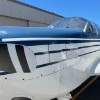


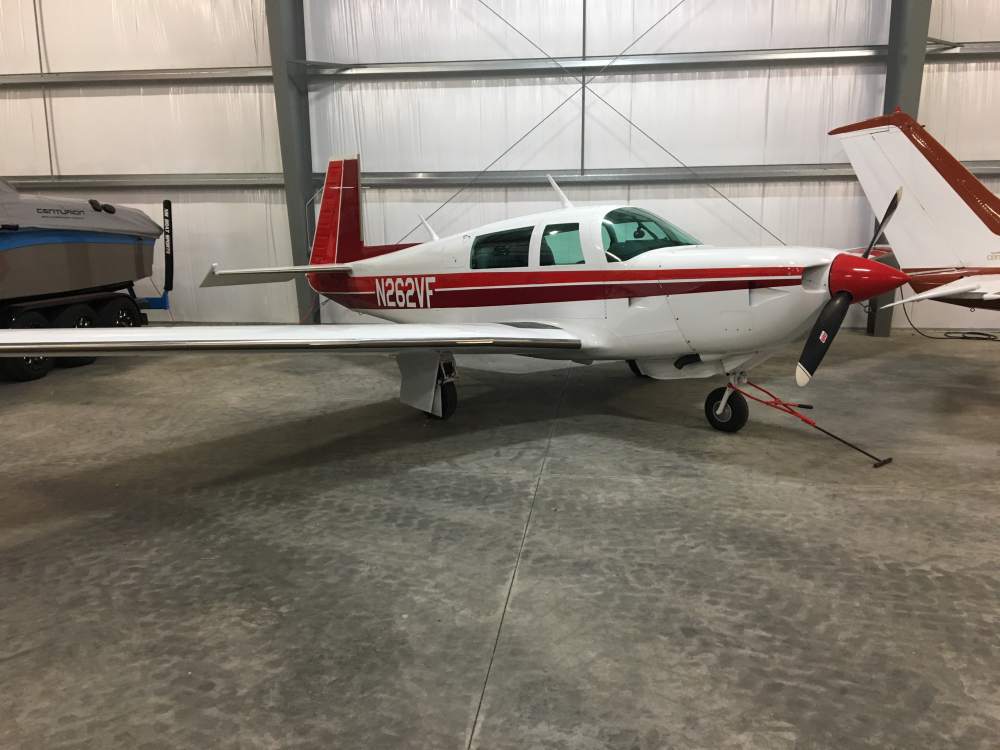

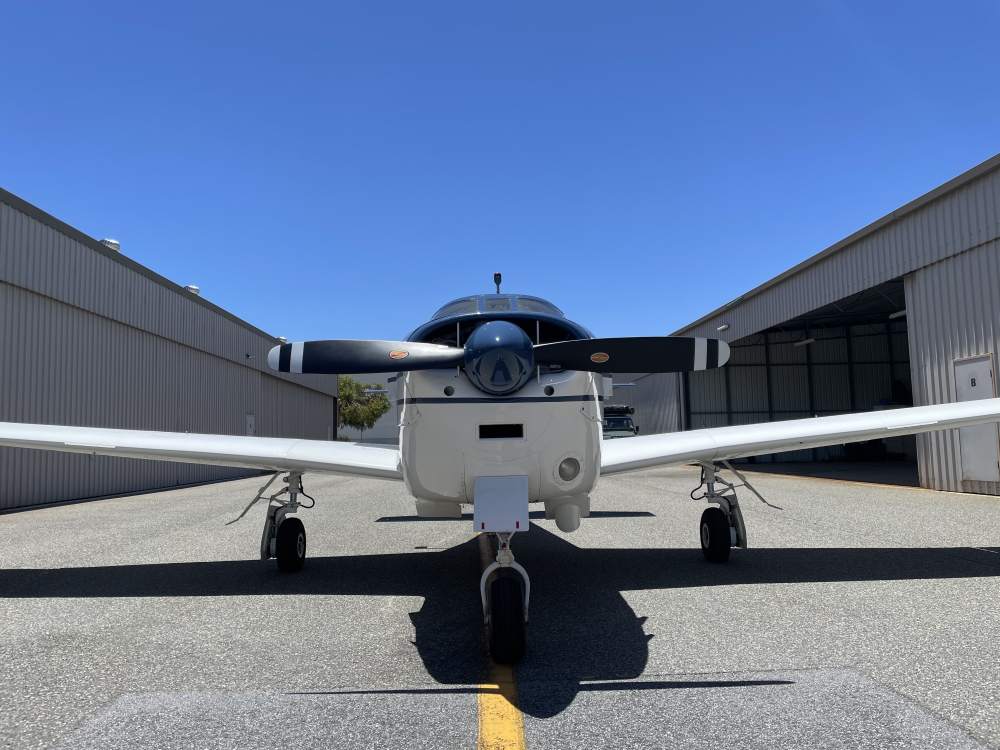
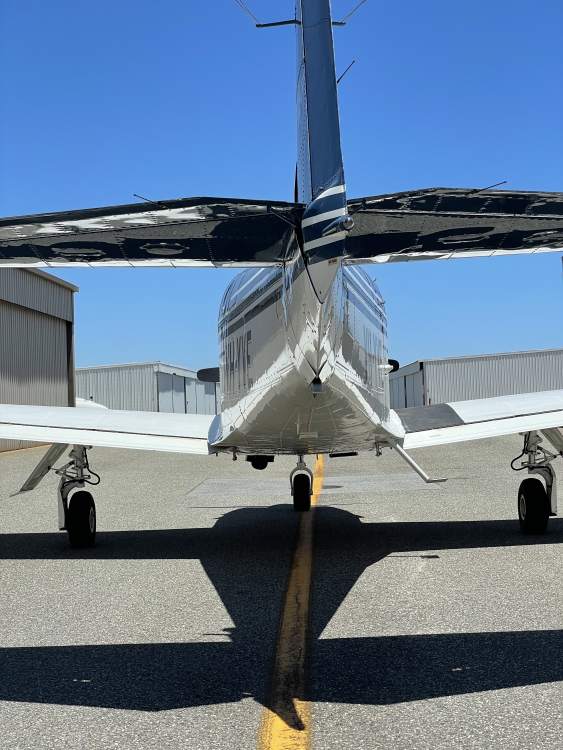
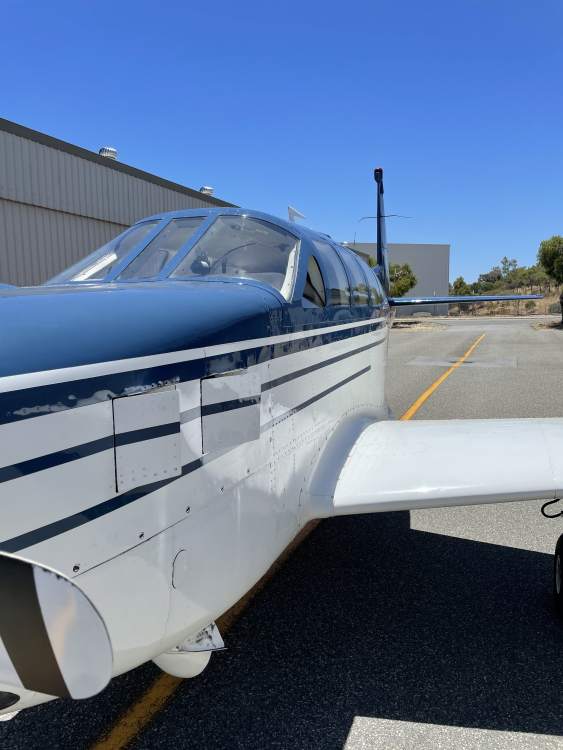
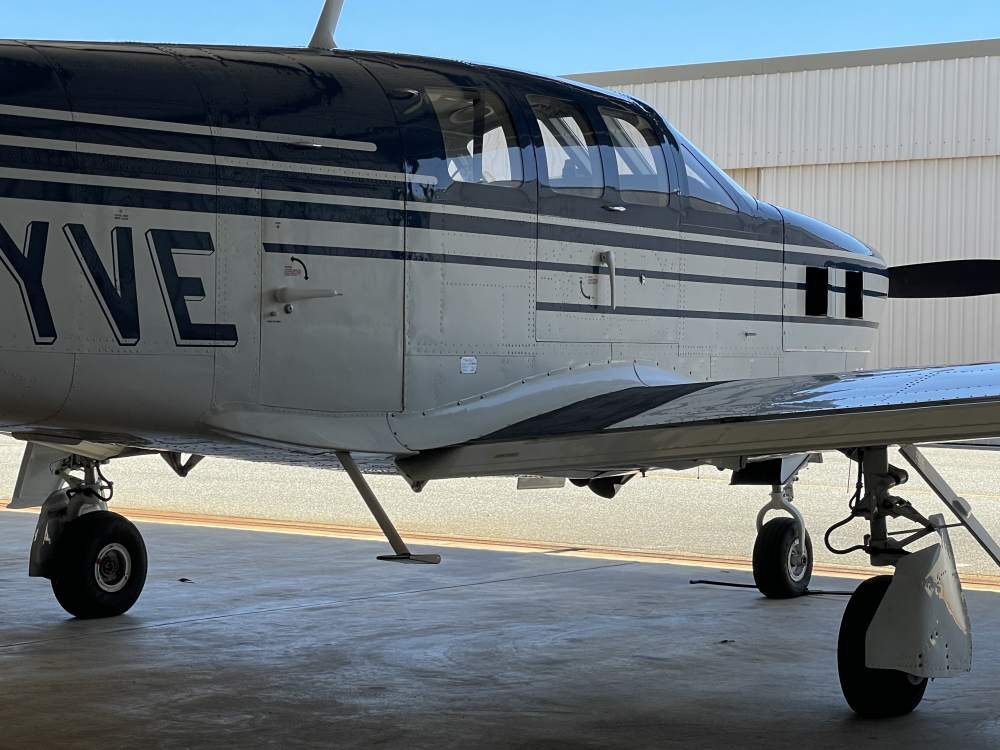

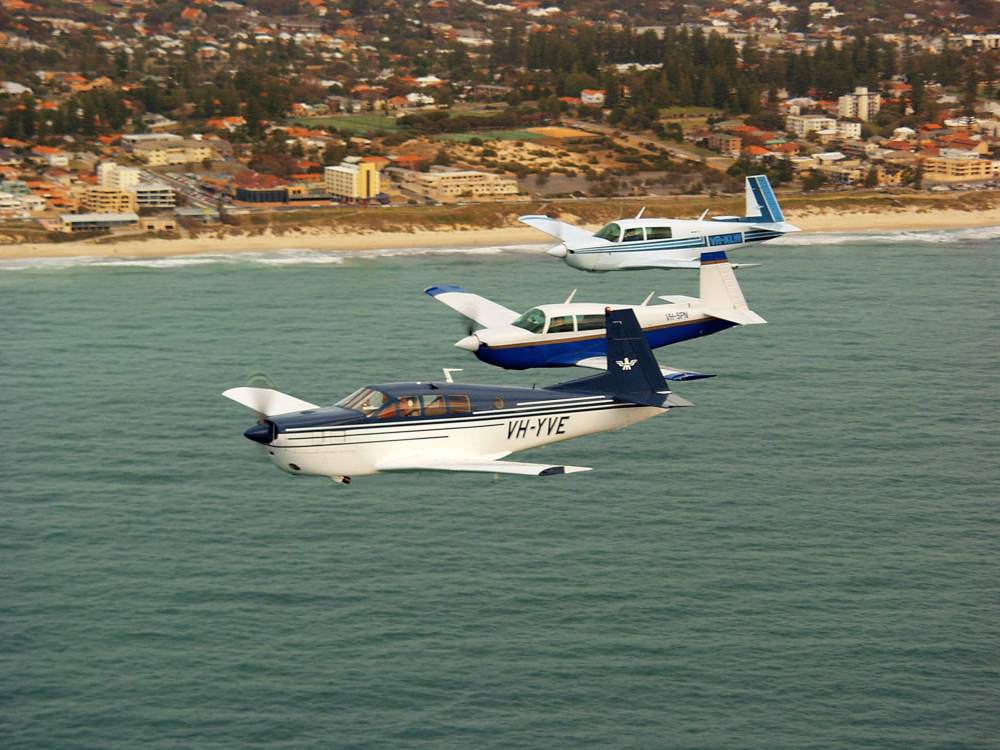
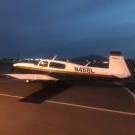





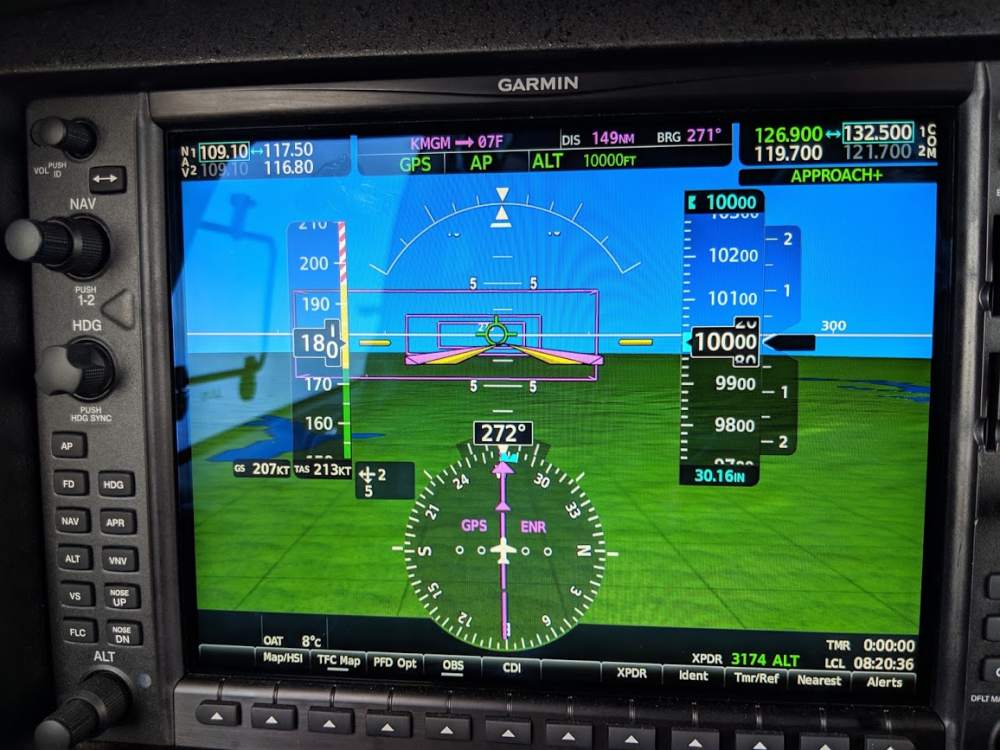
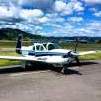
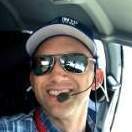
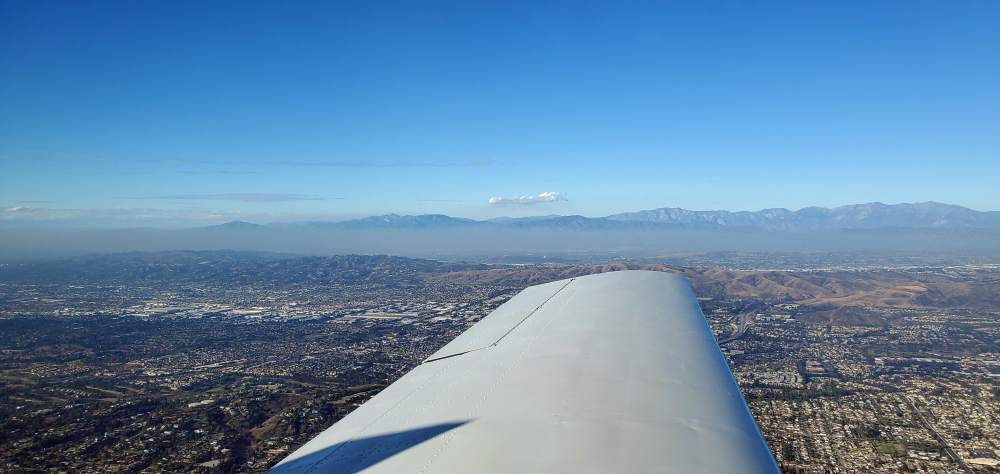
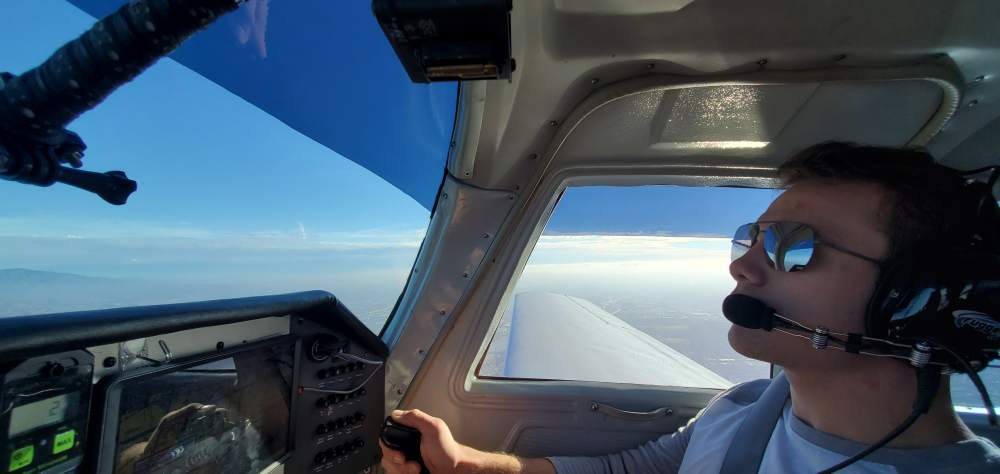





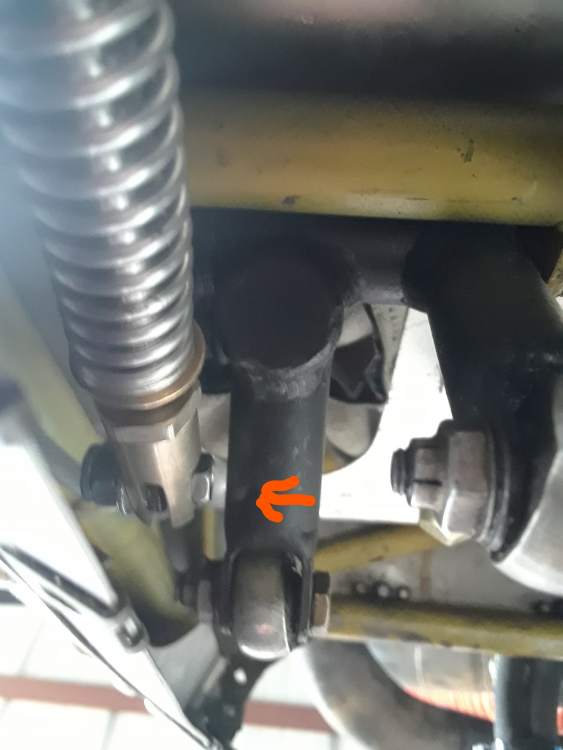
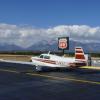



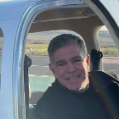
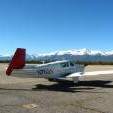
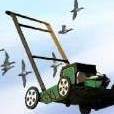
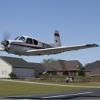
.thumb.jpeg.4fc29295cbe6e76ae2b3789c8da8220a.jpeg)
